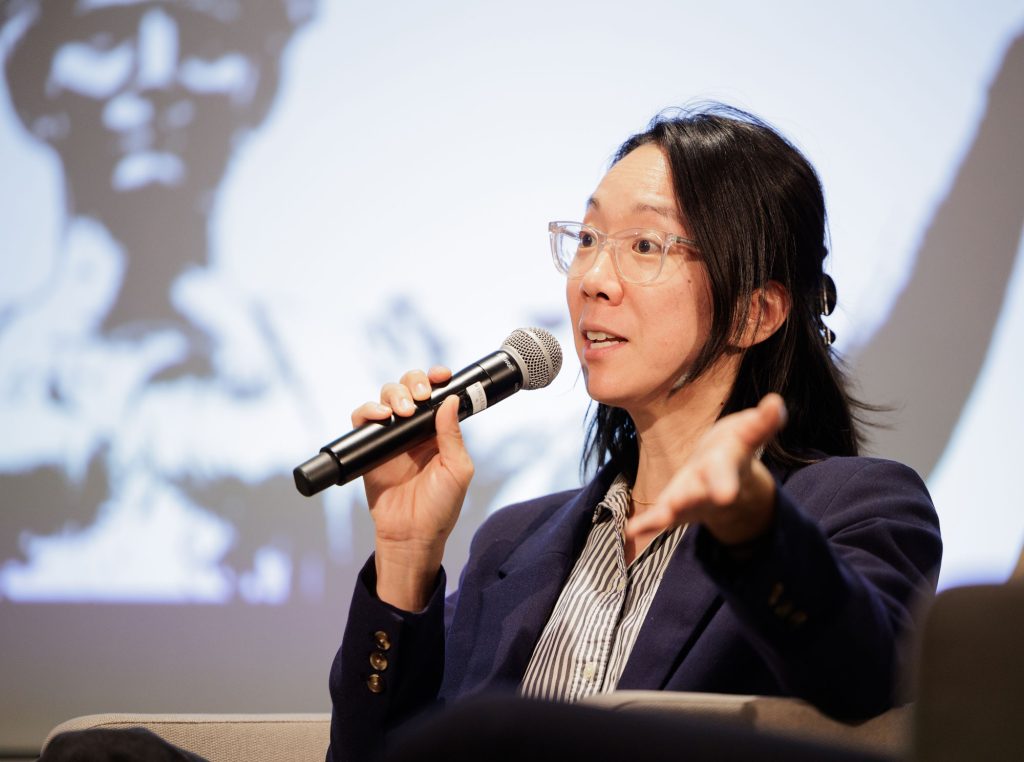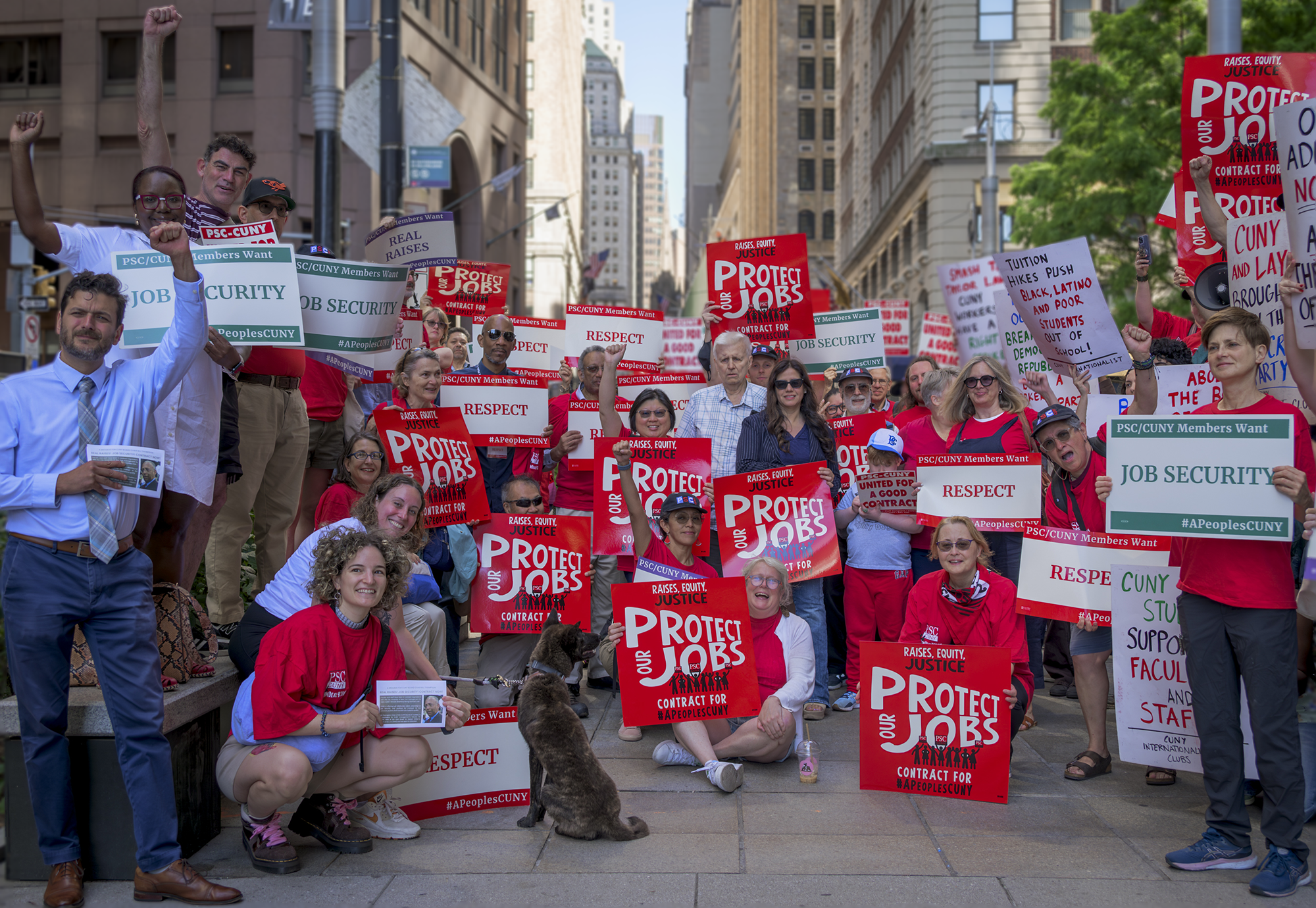Erin Lawson, the campaign director for New Yorkers for Higher Education Justice, often asks New York City undergraduate students who they think are some of the biggest landowners in the city. They might say “the Catholic Church, Donald Trump or Goldman Sachs,” she said, but she always tells them that on the top 10 list are New York University and Columbia University. That news is often met, she said, with “a look of betrayal on their faces, as if they are saying, ‘How could this possibly happen?’”

Susan Kang, associate professor of political science at John Jay College. (Credit: Paul Frangipane)
Lawson was speaking at an event at the CUNY School of Law last November to promote the REPAIR Act (Repeal Egregious Property Accumulation and Invest it Right), a state bill backed by the PSC that would, according to a program from the event, “end property tax exemptions for two of the biggest landowners in the city: Columbia University and NYU” and reinvest that money into CUNY, in order to repair campuses, lower or even eliminate tuition and hire more faculty and staff. The event was put on by the CUNY Law and Political Economy Collective and the NYC Union of Students.
Big money
The PSC and its allies estimate that the tax-exempt status of these real-estate giants results in $300 million in unrealized revenue to the state every year. The pamphlet went on: “Columbia (which, with a $13.64 billion endowment, is basically just a hedge fund with a university attached) receives $182 million in yearly tax exemptions…NYU, meanwhile, receives $145 million each year in property tax exemptions.”
The bill is coauthored by Assembly Member Zohran Mamdani and Senator John Liu, both of Queens. At the School of Law event, panelists including Mamdani said that the push for this bill is more than just a campaign for a particular piece of legislation, but about building a broad-based, grassroots movement of students, union members and community allies who are urging the city and state to rethink tax equity.
For Johanna Von Maack, a REPAIR Act organizer and undergraduate at Hunter College who spoke at the event, this means creating a movement with students at the helm. “We need to show students that they have a say in this movement,” she said. “We need a mass movement of students.”
Mamdani, who has also announced his candidacy for mayor in 2025, agreed that winning the bill’s passage in Albany was only part of the solution, which he believed was changing the political narrative. “Our theory of this campaign is by winning it in public,” he said. “The status quo, it is truly untenable and unbelievable.”
Susan Kang, an associate professor of political science at John Jay College and a member of the PSC’s executive council, said that the movement behind the bill aims to frame CUNY not just as a school that would reap the benefits of this legislation, but a public good that all New Yorkers benefit from, despite it being historically underfunded by the city and state. “It’s the same as public infrastructure,” Kang said, adding of the real-estate-rich private universities: “It’s their obligation to pay into this.”
Working class
The fact is, panelists said, CUNY is the university for the city’s working class. We all benefit from a fully-funded public university, as graduates go on to become teachers, nurses and other public servants whom the entire city needs. Public institutions depend on progressive taxation, and, as Lawson pointed out, Columbia’s endowment is almost as big as the GDP of Moldova. The city expects Tishman Speyer and Related Companies to share the wealth of their real-estate revenue, and REPAIR Act organizers want to add Columbia and NYU to that list.
The event comes after weeks of training programs led by Lawson and other student organizers, where dozens of students from CUNY, NYU and Columbia met to strategize on ways to promote the REPAIR Act. Energy for the movement is high at all three universities, organizers said. Sebastian Leon Martinez, a REPAIR Act organizer and undergraduate at NYU, said that living in Harlem as a child, he saw firsthand how Columbia expanded its footprint in upper Manhattan, showing how much lifting the tax exemption was needed. Von Maack noted that CUNY students see every day how austerity is shortchanging and underserving students, from “broken-down classrooms” to the sight of overworked “professors running from one classroom to another.”
Passage of the bill is not without its challenges. Because the tax exemption for these schools is enshrined in the state constitution, panelists noted, removing it and funneling the money into CUNY would need more than a simple vote and the signature of the governor: It would require a process of multiple rounds of legislative approval in order to change the constitution.
And the movement for the REPAIR Act expects resistance. For example, Mamdani said that he expects opponents to make “an attempt to paint this as an attack on nonprofits at large,” which he said would be a “bad-faith argument.”
Response
In fact, in response to the introduction of the REPAIR Act, NYU spokesman John Beckman said that “to choose two charitable, nonprofit organizations out of the thousands in the state and compel them to be treated like for-profit entities certainly strikes us as misguided and unfair.”
But REPAIR Act organizers note that the bill’s entire purpose is to create some sort of balance between the haves in the city’s higher education world – private universities with real-estate wealth and tuition prices that are prohibitively expensive for the working class – and the have-nots: underfunded CUNY campuses. The panelists at the School of Law event believed that this vision would win over the miserly voices of opposition.

